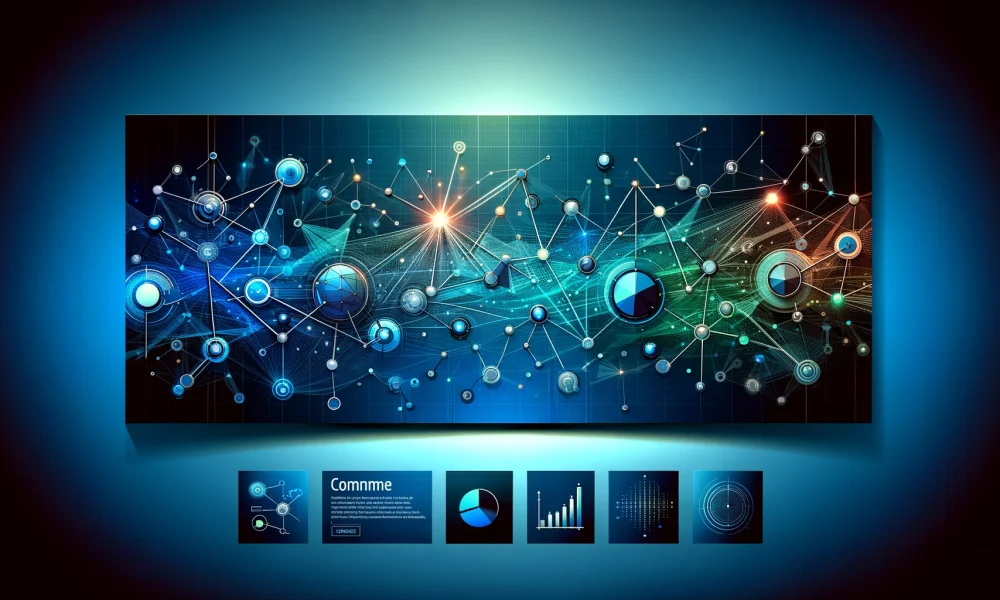Artificial intelligence (AI) has revolutionized scientific discovery, offering new paths for research and speeding up innovation. Graph AI and Generative AI, in particular, have the potential to revolutionize how scientists tackle complex problems. Individually, these technologies have already made significant impacts in fields like drug discovery and genomics. When combined, they become even more powerful tools for solving challenging scientific questions. This article delves into how Graph AI and Generative AI work together to drive scientific breakthroughs.
Exploring Graph AI and Generative AI
Let’s break down these two transformative technologies.
Graph AI: Unleashing the Power of Connections
Graph AI operates on data represented as networks or graphs, where nodes represent entities and edges symbolize relationships between them. Graph Neural Networks (GNNs) excel at deciphering these intricate relationships, enabling the identification of patterns and gaining profound insights.
Graph AI applications include drug discovery, protein folding, and genomics.
Generative AI: Fostering Creative Problem-Solving
Generative AI models, such as large language models (LLMs) and diffusion models, have the ability to generate new data such as text, images, and chemical compounds based on patterns learned from existing data.
Generative AI is instrumental in designing new molecules, simulating biological systems, and proposing fresh hypotheses from existing research.
The Synergy of Graph AI and Generative AI
Graph AI excels in understanding connections, while Generative AI focuses on generating new ideas. When combined, these technologies offer powerful solutions for scientific challenges. Here are some examples of their combined impact:
1. Accelerating Drug Discovery
Combining Graph AI’s ability to model molecule interactions with Generative AI’s capability to design new molecules has significantly expedited the drug discovery process.
Researchers achieved a breakthrough in identifying a drug candidate for fibrosis in just 46 days using these combined technologies.
2. Resolving Protein Folding
Graph AI models proteins as graphs to analyze their folding and interactions, while Generative AI suggests new protein structures with beneficial features.
DeepMind’s AlphaFold has successfully utilized this approach to solve protein-folding problems, aiding in the design of proteins for targeted therapies.
3. Advancing Materials Science
By modeling the interactions of atoms in materials, Graph AI predicts improvements in properties, while Generative AI suggests innovative materials with unique characteristics.
These technologies are enabling the development of materials for cutting-edge technologies like efficient solar panels and high-capacity batteries.
4. Unveiling Genomic Insights
Graph AI maps complex genomic networks to uncover relationships, while Generative AI suggests new genetic sequences for therapeutic interventions.
Combining these tools accelerates discoveries in diseases like cancer and genetic disorders.
5. Knowledge Discovery from Scientific Research
By combining Graph AI and Generative AI, scientists can extract knowledge from vast scientific research datasets, leading to innovative discoveries across disciplines.
This fusion of technologies facilitates the creation of novel materials with diverse functionalities, showcasing AI’s potential for interdisciplinary innovations.
Challenges and Future Prospects
Despite challenges like data quality and computational requirements, Graph AI and Generative AI hold immense potential for driving breakthroughs in scientific research. As AI tools evolve and data accessibility improves, these technologies will continue to revolutionize various scientific fields.
Conclusion
The synergy between Graph AI and Generative AI is reshaping scientific research by enabling faster, more creative solutions to complex challenges. From drug discovery to materials design and genomic exploration, these technologies are propelling scientific innovation to new heights. With AI’s evolution, we can anticipate even more groundbreaking discoveries, heralding a new era of scientific exploration.
Q: What is When Graph AI Meets Generative AI: A New Era in Scientific Discovery?
A: It is a groundbreaking collaboration between two cutting-edge technologies – Graph AI and Generative AI – that promises to revolutionize how scientists make discoveries.
Q: How does Graph AI enhance scientific discovery?
A: Graph AI leverages the power of network analysis to uncover hidden relationships and patterns in complex data sets, enabling researchers to make connections that might otherwise go unnoticed.
Q: What is Generative AI and how does it contribute to scientific discovery?
A: Generative AI is a machine learning technique that can create new data samples based on patterns found in existing data. By generating synthetic data, researchers can explore new possibilities and test hypotheses in a virtual environment.
Q: How can When Graph AI Meets Generative AI benefit different scientific fields?
A: This collaboration has the potential to impact a wide range of fields, from drug discovery and materials science to genomics and climate modeling. By combining the strengths of Graph AI and Generative AI, researchers can accelerate scientific breakthroughs and solve complex problems more efficiently.
Q: How can scientists leverage When Graph AI Meets Generative AI in their research?
A: Scientists can use this innovative approach to analyze large datasets, identify novel research directions, and generate new hypotheses. By incorporating Graph AI and Generative AI into their workflows, researchers can gain fresh insights and drive new discoveries in their respective fields.
Source link



